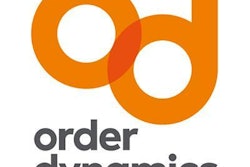At the forefront of many retailer strategies is ensuring they are effectively and seamlessly serving their customers across the multitude of channels that exist today. Even retailers like Morrisons and pound shops, which long resisted, are now moving online, albeit not without their own teething problems.
At the same time, pure-play retailers are recognizing the need to establish a physical presence. eBay is now partnering with Argos, while Amazon lockers are popping up across UK shopping centers, in co-op stores, and potentially, in London Underground stations in the near future.
At Planet Retail, we monitor retail developments worldwide, and the UK is by far the most advanced when it comes to the merging of online and offline channels. In fact, Planet Retail data show that more than one-third (35 percent) of online shoppers in the UK collected an item in store, compared to just 13 percent in the U.S. and 5 percent in Germany. By 2017, we expect more than three-quarters (76 percent) of online shoppers in the UK to collect their own online purchases.
Click and collect, as it is widely known, enables today’s “anytime, anywhere” consumers to marry the benefits of online shopping—price, assortment and availability—with the convenience of collecting the item on their own terms.
The most successful retailers recognized and responded to this shift in shopping behavior early on: Click and collect now accounts for 45 percent of Next online orders and is John Lewis’ fastest growing fulfilment channel. But more needs to be done. A recent Planet Retail survey showed that, despite the UK being a hotbed for click and collect, only two-thirds of the top 50 retailers currently offer the service.
In-store pickup remains the most popular collection method. However, shoppers are increasingly seeking alternative third-party locations as collection points. Out-of-store collection is set to grow in popularity as shoppers increasingly demand greater flexibility and choice.
To learn more about this changing landscape, we spoke to Neil Ashworth, CEO of CollectPlus—the UK’s largest store-based parcel delivery and returns service. “This is the area the consumer will take control of next,” Ashworth explained. “They’ve already taken control of the way in which they shop, and while there’s an awful lot of talk about immediacy, what customers want first and foremost is reliable delivery.”
CollectPlus has a nationwide network of over 5,500 convenience store, petrol station and supermarket locations. It offers three services: Returns, ClickandCollectPlus and Send. A growing number of retailers now offer CollectPlus’ ClickandCollect+ service, including well-known brands such as Asda, House of Fraser and River Island, as well as pure-play online operators like Amazon.
Shoppers simply select the CollectPlus option at checkout, enter their postcode to discover their nearest pick-up point and ultimately collect their parcel once delivered. “Increasingly, the customer is finding us. They actually go out looking for us now,” commented Ashworth.
Naturally, some retailers proved more adept than others when it comes to highlighting these options to the customer. Shop Direct and Asos can be considered best in class. However, retailers like Asda could do more to promote the service to their shoppers.
No More Lost Saturdays?
So why is click and collect becoming such a popular option here in the UK? Well, because home delivery is only truly convenient for people who are actually at home. Missed deliveries are a hassle: Shoppers are forced to retrieve parcels from a post office or sorting depot, a task further complicated by inconvenient locations, antiquated or incomprehensible opening times, and lengthy queues once there.
In addition, some workplaces banned staff from receiving parcels at work, escalating the need for more convenient collection points. Ashworth told us that nearly half (48 percent) of collections at CollectPlus locations take place outside normal nine-to-five working hours, therefore providing a much-needed service to busy consumers who increasingly shop online.
The economics of click and collect are certainly superior to home delivery, and let’s not forget that shoppers are likely to make additional purchases when picking up in store. In fact, half of CollectPlus customers buy further items once in store. What's more, 64 percent of customers typically did not use that store in the past, but 80 percent are likely to use that outlet in the future. Stores in the CollectPlus network earn on average of GBP2,712 (USD4,443) in additional revenues as a result of offering the service.
Lockers Pose No Threat
But what about immediacy, seemingly the last genuine unique selling point (USP) held by brick-and-mortar retailers? Increasingly, retailers in the digital space are seeking to provide a simulacrum of instant gratification via initiatives such as same-day delivery. But we have to ask: Is there really that great a demand for such cost-intensive services?
“Believe it or not, it’s the slower and cheaper services that are growing. It’s about reliability, not speed. Shoppers can take control with click and collect. It works for the customer because it’s on their terms.” Ashworth also noted that he does not see the rise of collection lockers as a threat to his business. “They certainly have a place in the market. They’re ideal for nightshift workers or anyone working unusual hours, but the physical investment needed is quite substantial, and I do not see them as a threat to our business.”
Planet Retail data show that just 4 percent of online shoppers in the UK currently use lockers as a means of collecting an order. Now, that figure may seem small, but let’s not forget that such self-service collection points debuted in the UK less than three years ago. Going forward, we can expect more retailers to utilize lockers as a means of getting product to customer.
InPost, for example, is planning to install 2,000 lockers across the country this year. Amazon, meanwhile, is in talks with Transport for London on placing lockers in London Underground stations, having already found success with the initiative in shopping centers and in other retail outlets. As one would expect, the Amazon service is free for standard deliveries and a mere GBP1.99 (USD3.26) for next-day delivery, thereby offering shoppers additional choice without a hefty price tag.
Looking beyond lockers, Planet Retail expects more innovation on the collection front going forward. Cracking the infamous “last mile” conundrum is going to move higher up retailers’ agendas in 2014 and beyond. CollectPlus, for example, recently announced a partnership with Westfield to launch the first luxury click-and-collect service at a shopping center. The Collect+ @Westfield service gives shoppers the option of trying on clothing purchases in special fitting rooms before deciding whether to return the item or take it home—a UK shopping center first.
We expect the venture to be a success. However, management of returns must be seamless and hassle-free for the shopper. This is further evidence that the real point of sale no longer takes place at the checkout, but when the shopper decides whether or not to keep the item.
Confidence in Returns
This brings us to another key feature of CollectPlus: its return service. Shoppers simply pre-pay postage online, attach a return label to the parcel and drop it off at their local CollectPlus location. They are given proof of postage and also have the ability to track the parcel online. This instils confidence in shoppers—something extremely useful in the fashion sector in which consumers may previously have been deterred from buying online due to size variations.
Today, many shoppers happily order the same item in more than one size or variation to ensure the right fit. With its roots in catalog retailing, clothing company Boden is a great example of a retailer ideally equipped to cater to these new ways of shopping. Every Boden order is packed with a CollectPlus slip detailing how to return the item. One of the first options to tick under reason for return is “ordered same item in two or more sizes/colors”.
A solid return policy, therefore, assumes greater prominence in the customer choice of online vendor. Planet Retail data reveal that 78 percent of UK online shoppers deem ease of returns a critical factor when shopping online. Ashworth noted: “It used to be about price, availability and range, but now delivery plays a major a role. Confidence in returns is a really important part of the decision-making process. Retailers need to make it as easy as possible for the customer.”
So what is the key to success in a multi-channel world? “Having a distinctive proposition,” said Ashworth. “Those retailers that are true to themselves, those that are the same retailer online as offline, and maintain their proposition to the customer are the ones that have opportunity to succeed.” Whether it’s picking up in store, from a locker or from a third-party location,n such as a CollectPlus outlet, the notion of both buying and collecting on the shopper’s terms is not going to go away.
In conclusion, we asked Ashworth what he would advise retailers who are late to the game. “Don’t delay,” he replied. “You still have the opportunity to leapfrog your competitors. The technology available today is far more accessible than it was just 15 to 20 years ago. You don’t need to build from scratch. Dive in, but retain your identity.”
Natalie Berg is the global research director at Planet Retail.

















